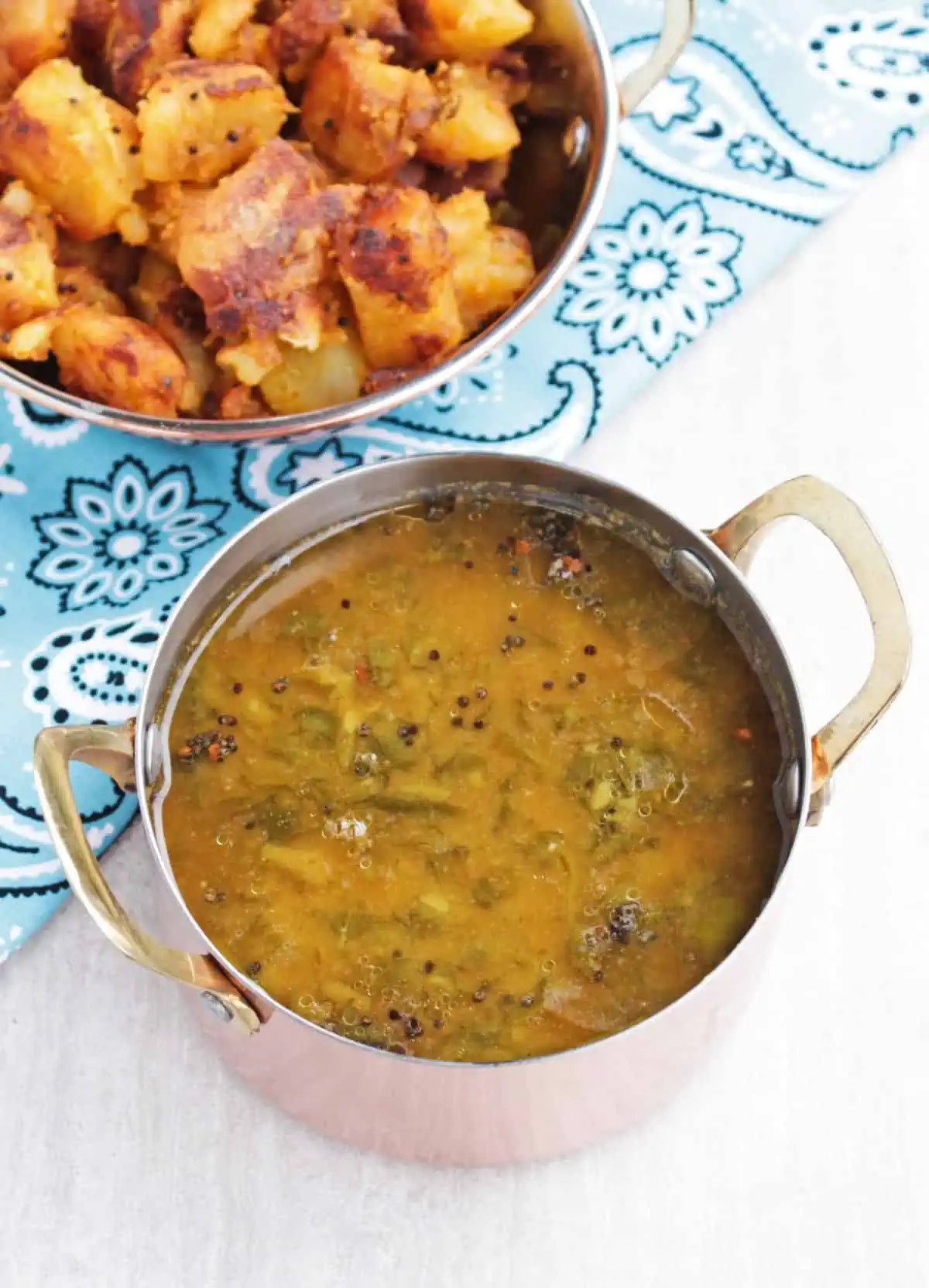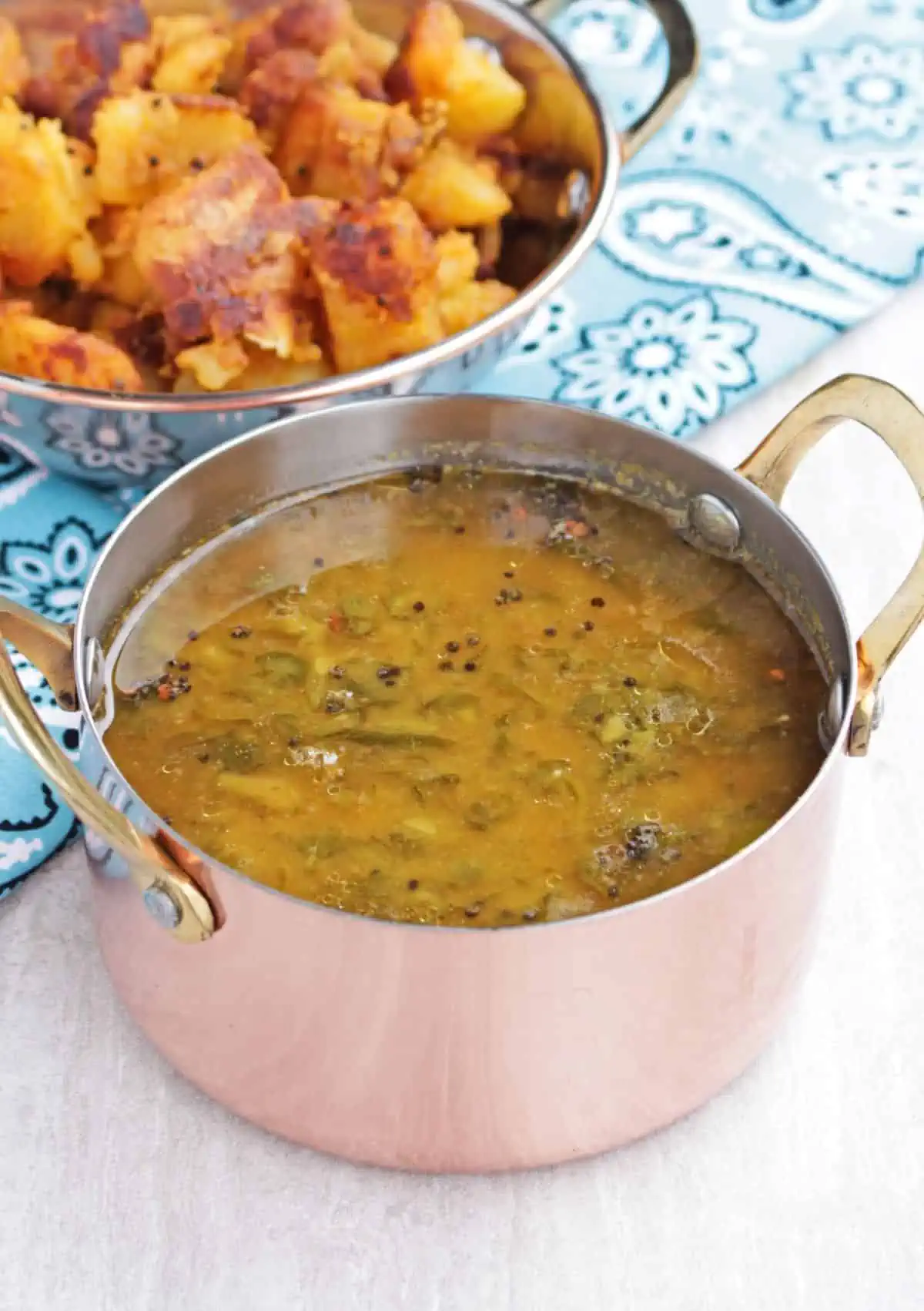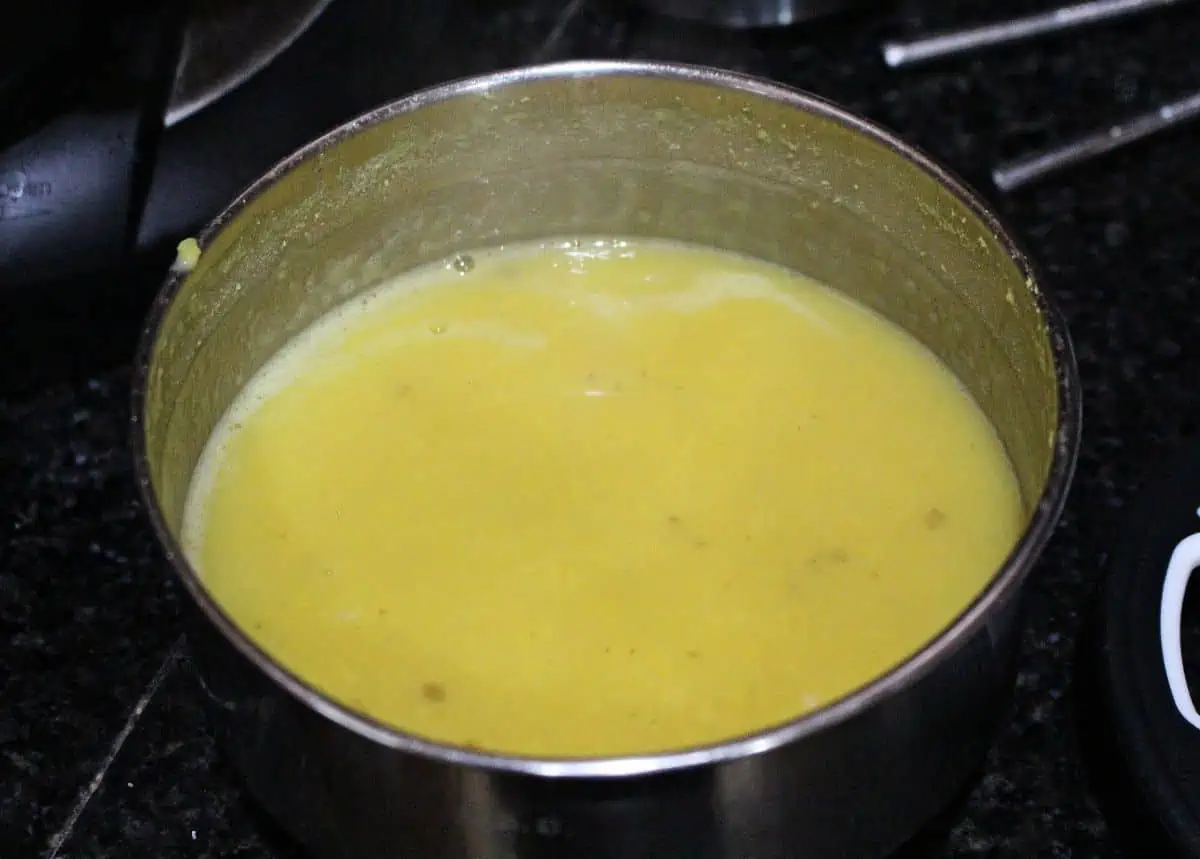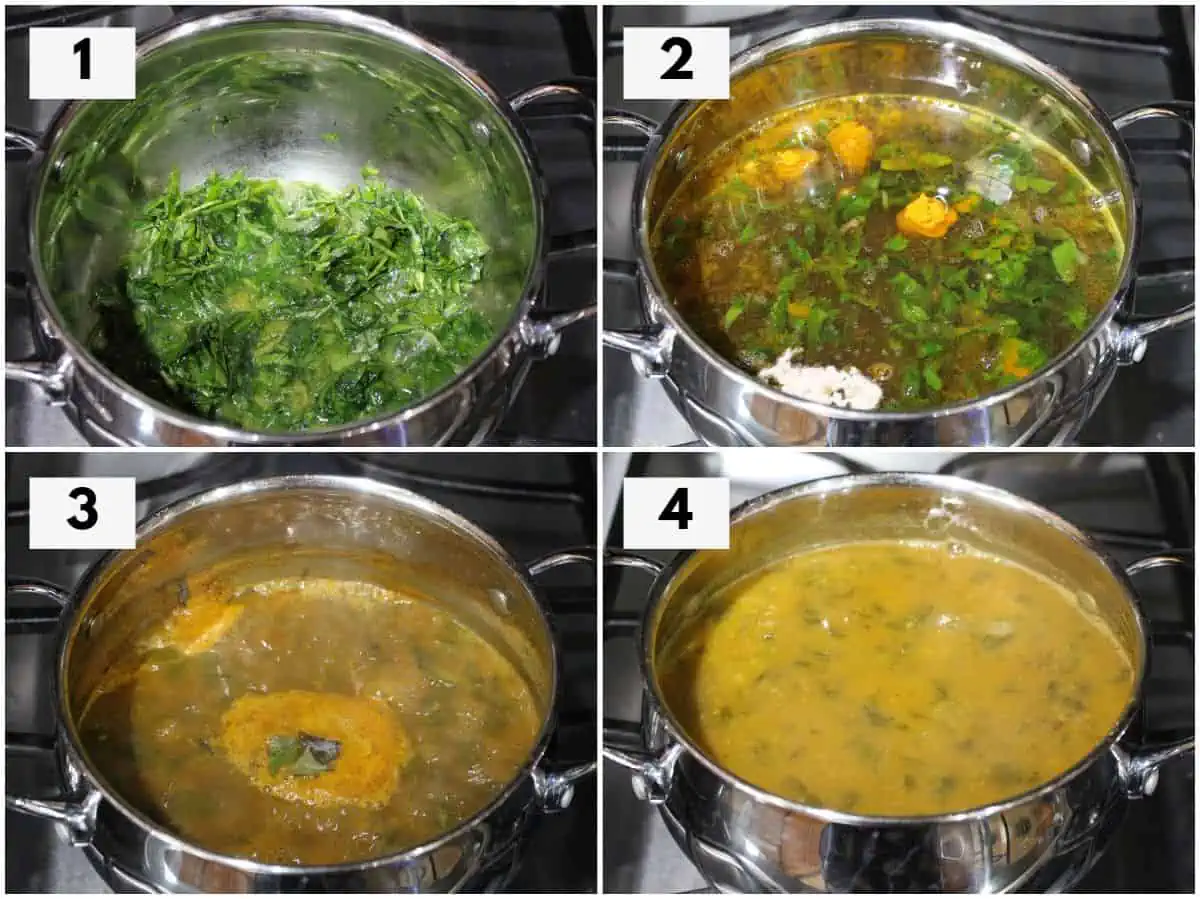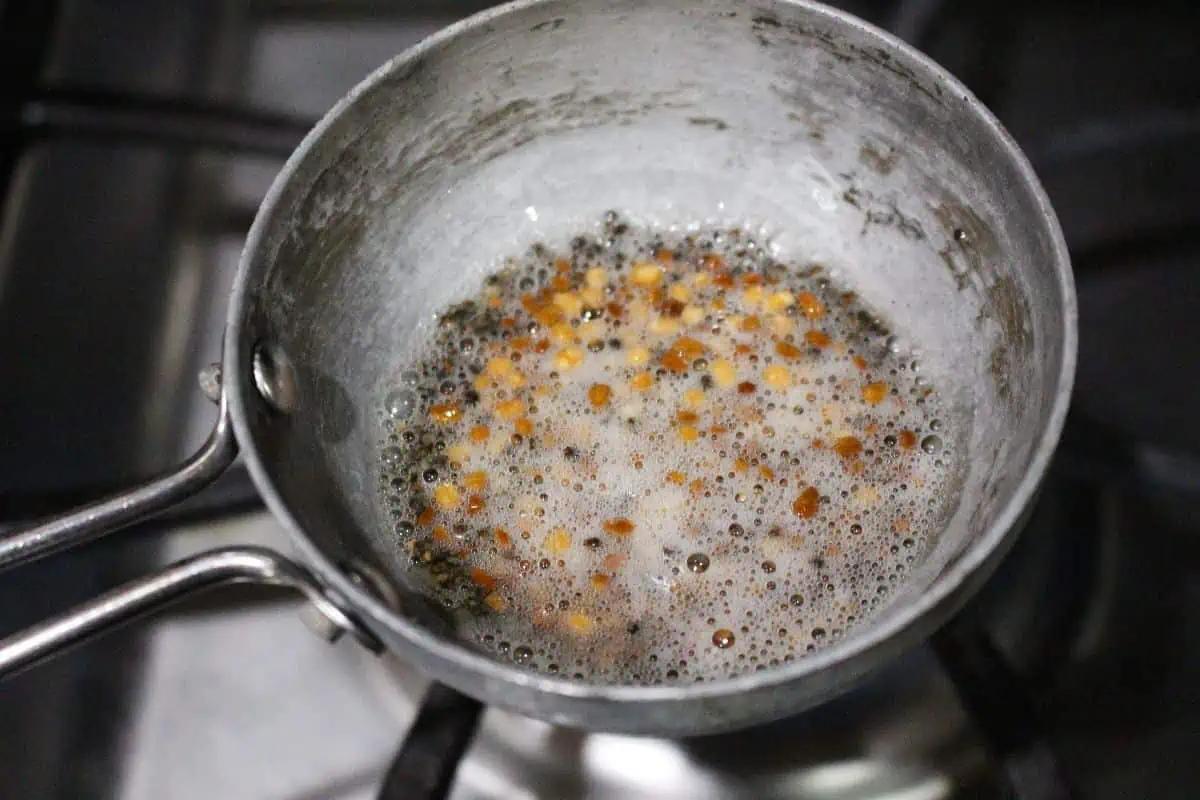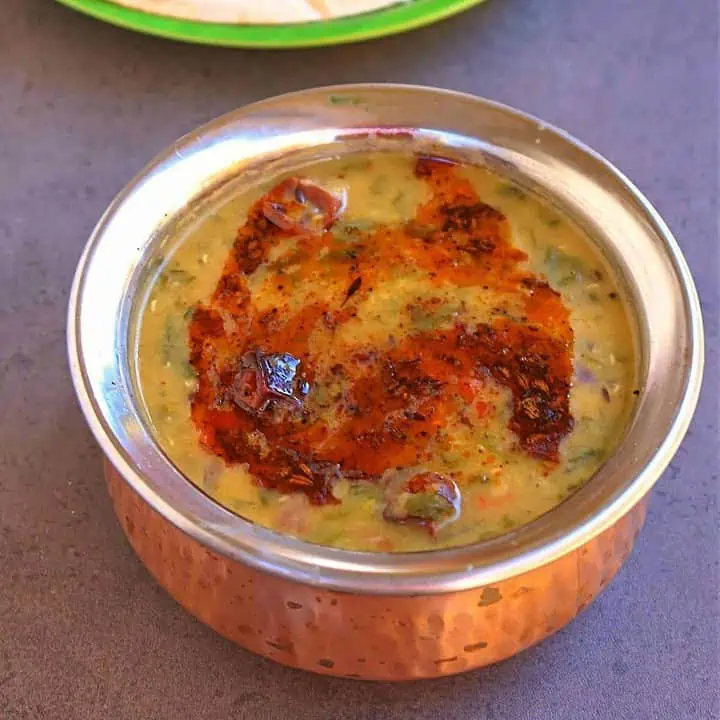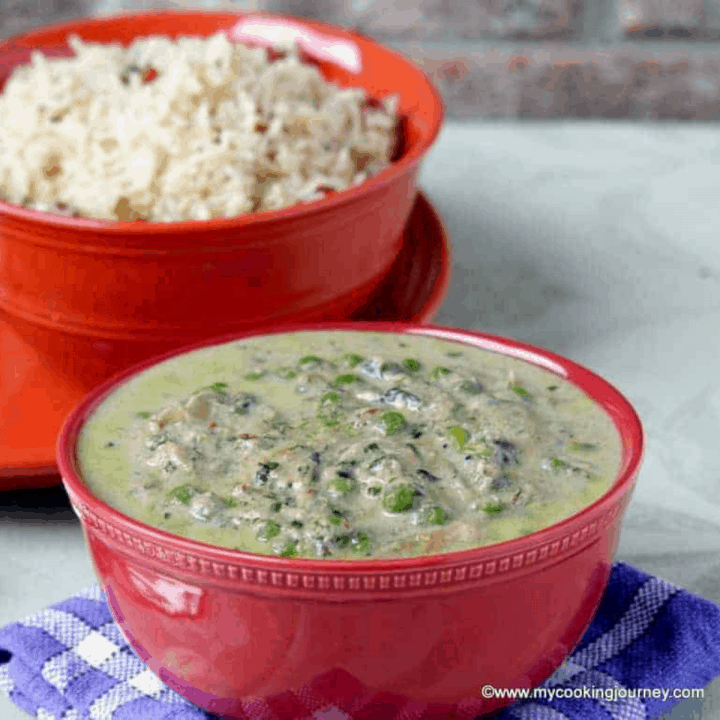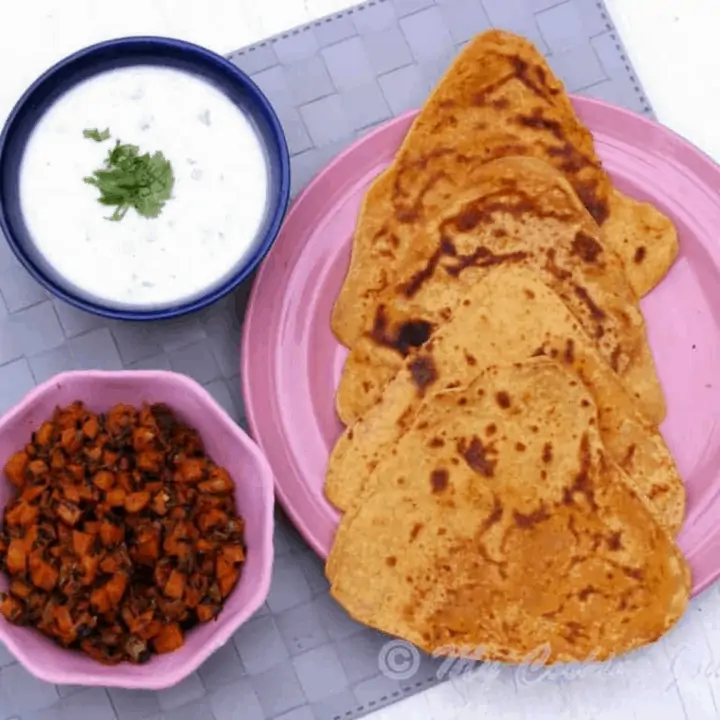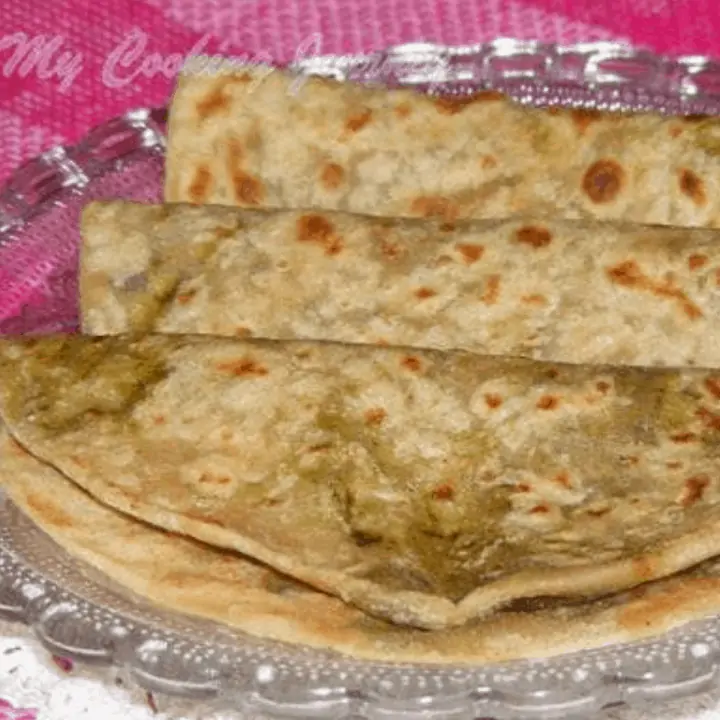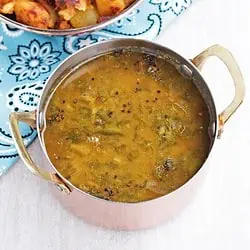Amma made the best-tasting sambars. Especially sambar recipes like this where we don’t use freshly ground spices. Her sambar flavors were just unique and even though I try to make her exact recipe, the flavors just are not like hers. This methi sambar is made just with fresh vendhaya keerai leaves. I grow my own methi and it is one of my favorite sambar recipes to make with freshly harvested methi leaves. Appa loves this vendhaya keerai sambar with adai. Amma usually makes a little extra for lunch and on those days she plans to make adai for dinner. I never ate my adai with sambar and would only eat it with vellam (jaggery) and vennai (butter). Even to this day, when I make adai, jaggery and butter are what I prefer. I make the methi sambar without onion, garlic or tomatoes. The fresh methi leaves is the star of the dish. We could add some shallots in the recipe if preferred, but I like to keep it as is without onion.
Sambar or kuzhambu?
Sambar and kuzhambu are a very integral part of South Indian, especially Tamil cooking. The meal starts with sambar rice or kuzhambu rice and then we move on to rasam rice and then end with curd (yogurt) rice. Many people might call this kuzhambu and many might call it sambar. I call this sambar as it has cooked toor dal in it. This is a tamarind-based stew made with methi leaves as a vegetable and it has cooked and mashed tuvaram paruppu. I call anything kuzhambu when it does not have toor dal in it like the Vatha kuzhambu and Paruppu urundai kuzhambu. Then there is the araichu vita sambar, pitlai, and rasavangi which are made with freshly ground lentil and coconut spice mixture.
Methi / Fenugreek leaves
Vendhaya keerai also known as methi in Hindi and fenugreek leaves in English is a green leafy vegetable that sprouts from fenugreek seed. When harvested as young leaves, these are considered microgreens and tastes great on salads and sandwich. I also love to make methi paratha with fresh and tender fenugreek leaves and they are loaded with nutrients. Methi leaves have many health benefits and have vitamins and minerals. They also have anti-inflammatory properties and are known to improve gut health. Methi leaves are very easy to grow at home and I always have them growing in batches through spring, summer, and fall.
Why make Methi sambar?
Tastes wonderful - Vendhaya keerai sambar is very delicious and aromatic. Easy to make - Once the toor dal is cooked, this sambar is very easy to make. Needs minimal ingredients - We use just the pantry staple ingredients to make this methi sambar. Good for you - Fenugreek leaves have many health benefits and it is good to be included in our routine cooking. Easy to grow methi - The best part is we can make this sambar with freshly grown methi leaves. Vegan and gluten-free - Vendhaya keerai sambar is vegan and gluten-free (make sure the asafoetida is gluten-free).
Ingredients needed
Check the recipe card at the bottom of the page for exact measurements and printable detailed recipes. Prepare tamarind extract - Tamarind - I like to use dry tamarind which I soak in hot water and extract the juice to make sambar. We can substitute it with tamarind paste or pulp. Tuvaram paruppu/toor dal - We will need to cook the tuvaram paruppu until soft and mushy and use it in the sambar. Sambar powder - I bring my sambar powder freshly ground from India. We can buy the sambar powder from any Indian grocery store. Turmeric powder - I add a little turmeric powder when cooking the lentil. It adds a wonderful flavor and color and is also beneficial for us. Seasoning - I season the sambar with mustard seeds, urad dal, and methi seeds (vendhayam) in gingelly oil or coconut oil. Asafetida and salt - Use gluten-free asafoetida if gluten-sensitive.
Step-by-step process
Prep work -
Cook the tuvaram paruppu in a pressure cooker or instant pot with sufficient water until soft and mushy. I use the manual/pressure cook setting in the instant pot and cook the dal for 17 to 18 minutes. Depending on the quality of the dal, it might take less or more time. If the lentil takes longer to cook, soaking it for about 30 minutes before cooking helps. Soak the tamarind in hot water for a few minutes and extract the juice. We will need about 2 cups of diluted tamarind water. Keep it aside. If using tamarind paste, mix it with about 2 cups of water. Prep the methi/vendhaya keerai -
Cut the roots from the methi bunch using a sharp knife and soak the leaves in water in a large bowl. Using your hands shake the leaves well in the water to get all the dirt and the sand off the leaves. Leave the bowl undisturbed for 5 – 10 minutes to allow all the sand and dirt to settle in the bottom. Then slowly lift off all the leaves from the top and you will notice that all the dirt would have settled down in the bottom of the bowl. Now coarsely chop the leaves and the stem.
Expert tips
Prep the methi leaves as a part of meal prep/planning and keep it in the refrigerator. This saves a lot of time. Make sure to cook the tuvaram paruppu/lentil until soft and mushy. I don’t add curry leaves or cilantro to garnish the vendhaya keerai sambar as I like the sambar to have the methi flavor. Sambar should be in a good pouring consistency. It should not be too thick or too runny. Serve the sambar hot.
Frequently asked questions
More recipes with fresh methi
If you made this recipe and liked it, give a star rating on the recipe card or let me know in the comments below. You could also share it with me on Instagram using #MyCookingJourney and tagging me @sandhya.ramakrishnan. You could follow me and my recipes on Facebook |Instagram | Pinterest | Twitter/X In the cooking pot, heat 1 teaspoon of oil and add the chopped methi leaves/stem to it. Sauté for about 4 to 5 minutes or until the leaves slightly wilt (step 1). Add the prepared tamarind extract to the pot and mix well. Add sambar powder, asafetida and salt and let it boil well (step 2). Simmer the mixture and cook until the raw smell of tamarind disappears (about 10 minutes) (step 3). In the meantime, mash the cooked dal and add this to the boiling sambhar. Add water to adjust the consistency and bring the sambar to a boil again. Simmer for about 10 more minutes for all the flavors to combine (step 4). Heat coconut oil or gingelly oil in a small pan. Add mustard seeds and urad dal and let it fry for about 10 seconds. Now add the methi seeds and fry for 10 more seconds. Let the seasoning become aromatic and golden brown. Add it to the simmering sambar and mix well. Methi sambar tastes great with upma. My favorite is Arisi upma or godhumai rava (broken wheat) upma. I also love to serve vendhaya keerai sambar with puzhangal arisi pidi kozhukattai or broken wheat pidi kozhukattai. I have not tried to freeze sambar before. So, not sure of that would work or not. IfI have excess sambar, I have used it in the past to mix with wheat flour/aata and make it into chapathi dough.
Recipe
